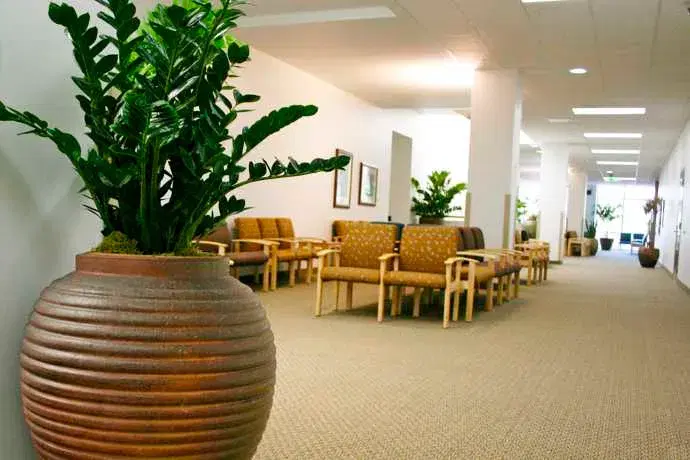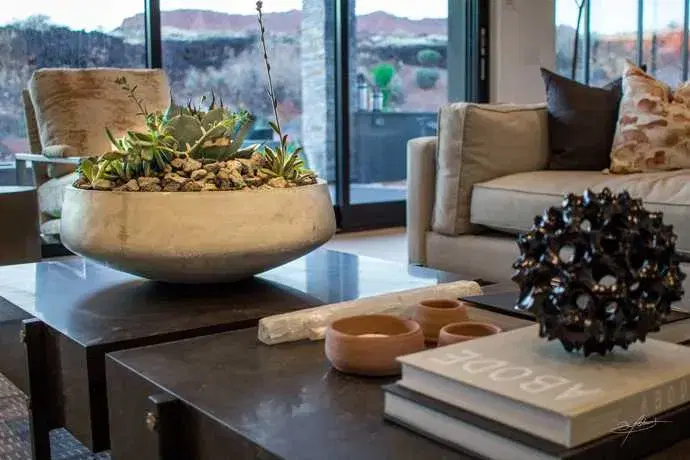
Just Breathe...
INDOOR PLANTS AND THEIR IMPACT ON YOUR HEALTH
The average person, at rest, breathes in 11,000 liters, (388 cubic feet) of air each day. Those who exercise consume even more. This means every month we breathe more than 1.5 times the volume of an Olympic sized swimming pool through our lungs. The quality of that air can have a profound effect on our health, mental clarity, and overall well-being. Mother Nature has provided the perfect solution for feeding our constant need for pure fresh air and that solution is PLANTS!

THE MIRACLE OF OXYGEN
We all learned in school of the symbiotic nature of our carbon dioxide exchange with green growing things, and their continual replenishing of our oxygen supply. We’ve all observed someone’s face light up at seeing a beautiful bouquet of fresh flowers. We’ve all felt the relaxation that happens when we take in a deep breath of fragrant herbs or blossoms. The healthful benefits of plants touch us on every level. Their effects on our lives are physical, emotional, psychological, even spiritual. Intuitively humans seek out nature to restore their senses and recharge their batteries. The psychological term for this attraction is Biofilia, which literally means, “love of life or living systems.” Think about how important trees, grasses, shrubs, and flowers are to our enjoyment when we visit a park, play a round of golf, or hike in the mountains. Plant life often is the determining factor in whether a place is considered beautiful or not.
LIFE LIVED INDOORS
Unfortunately, most of us don’t get to spend the majority of our time in the great outdoors. What happens to the quality of our air when we spend most of our time inside? Does that affect our health and well-being? NASA scientist BC Wolverton said it perfectly, “Since man’s existence on Earth depends upon a life support system involving an intricate relationship with plants and their associated microorganisms, it should be obvious that when he attempts to isolate himself in tightly sealed buildings away from this ecological system, problems will arise…The answer to these problems is obvious. If man is to move into closed environments, on Earth or in space, he must take along nature’s life support system.” Problems with indoor air quality can be insidious because they are largely invisible.
The EPA released the following statement in relation to these invisible pollutants or Volitile Organic Compounds and their effect on indoor air quality. Concentrations of many VOCs are consistently higher indoors (up to ten times higher) than outdoors. VOCs are emitted by a wide array of products numbering in the thousands. Examples include: paints and lacquers, paint strippers, cleaning supplies, pesticides, building materials and furnishings, office equipment such as copiers and printers, correction fluids and carbonless copy paper, graphics and craft materials including glues and adhesives, permanent markers, and photographic solutions.

Organic chemicals are widely used as ingredients in household products. Paints, varnishes, and wax all contain organic solvents, as do many cleaning, disinfecting, cosmetic, degreasing, and hobby products.
The EPA’s Office of Research and Development found levels of about a dozen common organic pollutants to be 2 to 5 times higher inside homes than outside, regardless of whether the homes were located in rural or highly industrial areas. Studies indicated that while people are using products containing organic chemicals, they can expose themselves and others to very high pollutant levels, and elevated concentrations can persist in the air long after the activity is completed.”
THE CLEANING OF THE AIR
In addition to re-oxygenating the air we breathe, plants actually “scrub” the air, filtering and cleaning harmful VOC’s. They add humidity, release chemicals that reduce mold spores & bacteria in the ambient air, and neutralize free radicals. The infographic shown ( ) is the result of research done to demonstrate the positive effects of plants in the workplace, but the same can be said of our homes. When rooms are properly planted* we can expect to enjoy, not only the beauty that living things have to offer us, but the greater health benefits they provide.
Here are a few easy care plants to get you started on the path to greater health and enjoyment of your indoor spaces.
Pothos (Devil’s Ivy)
Spathiphyllum (Peace Lilly)
Zulu Zamifolia (ZZ Plant)
Sanseveria (Snake Plant)
